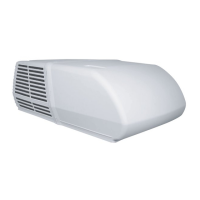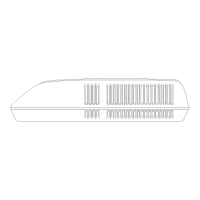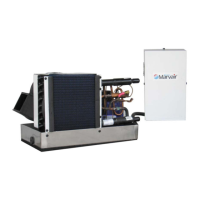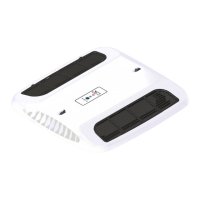7
Power Supply – Generated by on-board motor generator
If the power supply for the recreational vehicle is supplied
by an on-board motor generator, its wiring may be
identical to the commercial power described above.
There are, however, some motor generators on which both
the current carrying leads are insulated from the ground.
That is to say; there is no grounded neutral, so there will be
115 volts (domestic USA) between the black and white
leads, but there will be 0 volts between either lead and
ground.
WARNING
The service technician must keep in mind when checking
to make sure that the power is turned off. Check only
between the hot (black) lead and the neutral (white) lead.
IV. CAPACITORS
Run Capacitor
The purpose of the run capacitor is to improve motor
efficiency during running. The run capacitor is always
connected between the start and run or main terminals of
the motor.
On some older models, one of the terminals on the run
capacitor will have a red dot (the identified terminal). The
identified terminal should always be connected to the run
or main terminal of the motor and to the neutral line.
Start Capacitor
Most models use a start capacitor and a start relay to give
the compressor high starting torque. The compressor will,
therefore, start against normal pressure difference (head
pressure minus suction pressure) even when shut down for
a short period of time. The start relay will disconnect the
start capacitor when the motor reaches approximately 75%
running speed.
Start (Potential) Relay
The start relay consists of –
1) Normally closed contacts internally between
terminals #1 and #2 which switch in the start
capacitor in parallel to the run capacitor during
shut down and then switch out the start capacitor
when the motor reaches approximately 75%
normal running speed.
2) A high voltage coil internally between terminals
#5 and #2 to actuate the contacts.
Positive Temperature Coefficient Resistor (Commonly
Known as the PTCR Start Device)
The resistor acts like a potential relay in that it takes the
start capacitor out of the start circuit, but uses resistance of
electrical flow (back EMF from compressor) instead of
opening a set of contacts. The service person should be
careful handling the resistors. They will be hot during
operation (up to 160 degrees F). The air conditioner needs
to be off for 3-5 minutes during cycle time and when
servicing to let the resistor cool down.
V. METERS
Ammeter and Its Use
An ammeter is an instrument used for measuring electric
current. This instrument has snap-around jaws that will
allow you to read the current through a wire without
detaching the wire from the system. These meters also
have volt meter and ohm meter attachments so they are an
excellent multi-purpose meter. NO TECHNICIAN
SHOULD EVER ATTEMPT A SERVICE CALL
WITHOUT ONE.
Ohm Meter and Its Use
An ohm meter is really a resistance meter that is calibrated
in ohms. The ohm meter has its own power source, a
small dry cell, which forces a small amount of current
through a conductor via the meter probes. The meter must
be calibrated to read 0 ohms when the probes are touched
together each time it is used because as the dry cell loses
its charge, the meter will get out of calibration.
If the probes of an ohm meter are attached to the terminals
of a closed switch, the meter will read 0. This means that
there is virtually no resistance to current flow through the
switch. Now, if the switch is turned off, the contacts will
be open and there will be a very high resistance. In fact,
the resistance is so high it is an infinite number of ohms so
we call this reading infinity.
Volt Meter and Its Use
If we attach one volt meter probe to the hot line and the
other probe to the neutral line of a standard circuit, the
meter reading will be the electromotive (electron moving)
force or pressure difference between the two lines.

